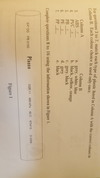First Year Flashcards
(614 cards)
When did Canada’s system for model code development and maintenance begin?
In the 1930’s.
Who decides the content of model codes?
The volunteer members.
What are the building codes in Canada generally concerned with?
Fire safety.
Health[][][][]
Structural sufficiency.
Which code may contain retroactive requirements?
Fire codes.
When does a standard become enforceable?
By referencing a standard in a code.
Name five standard-writing organizations.
BNQ.
CGA.
CGSB.
CS[][][]]
ULC[][]
Which two Canadian cities have jurisdiction over construction?
Montreal.
Vancouver.
How long before the end of a code cycle must a standing committee recieve a proposed change for it to be considered for that code cycle?
At least two years before the end of the cycle.
When is a task group established?
When a proposal is complex and requires significant analysis.
What options are available to a standing committee regarding a proposed change?
Amend a warding.
Approve a proposal.
Defer the proposal for more information or research.
Reject a proposal[][][][][][][][][][][][][][][][][][][][][][][][][][][][][][][][][]
How long is a code cycle?
Five years.
How long is the public comment period?
Three months.
When does a proposed change move forward?
After all comments are satisfactorily resolved.
How are the National Model Code documents developed and maintained?
Through a broad-based consensus process.
The National Plumbing is part __ of the National Building Code.
7.
What plumbing code is the model that the provinces and territories used to develop their plumbing codes?
National Plumbing Code.
Codes are developed in Canada to provide minimum safety requirements to ensure:
The health and safety of our citizens.
What are some of the other codes you may be required to follow?
Boiler Pressure Vessel Code.
Natural Gas and Propane Installation Code.
Pressure Vessel Code[][][][][][][][][][][][][][][][][][][][]
NFPA 13[][][][][][][][][][][][][][][][][][][][][][][][][][][][][][][][][]
NFPA 13D[][][][][][][][][][][][][][][][][][][][][][][][][][][][][][][]]
NFPA 13R[][][][][][][][][][][][][][][][][][][][][][][][][][][][][][][]]
How many Standing Committees are there under the CCBFC?
7.
Give a brief description of the main function of each of the following:
CGA.
CSA.
ULC.
CGA is an organization that tests and certifies appliances, equipment, components, and accessories to an applicable standard as well as develop standards and codes.
CSA is an organization that tests and certifies appliances, equipment, components, and accessories to an applicable standard as well as develop standards and codes.
ULC is an organization that tests and certifies appliances, equipment, components, and accessories to an applicable standard as well as develop standards.
What is the annual cost of fire in Canada?
$11 billion.
What is one of the primary objectives of the National Building Code?
To provide a minimum level of fire safety for building occupants.
When was the NFPA first organized?
1896.
The NFPA 13 is the standard for the ________________________.
Installation of sprinkler systems.

























































